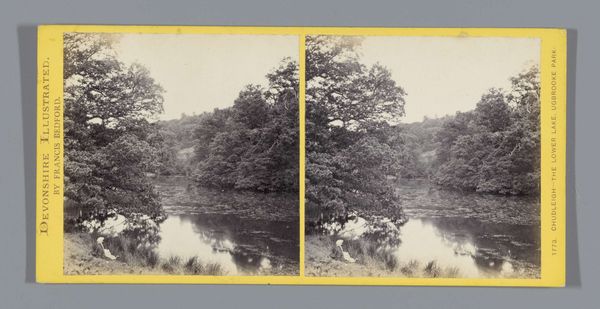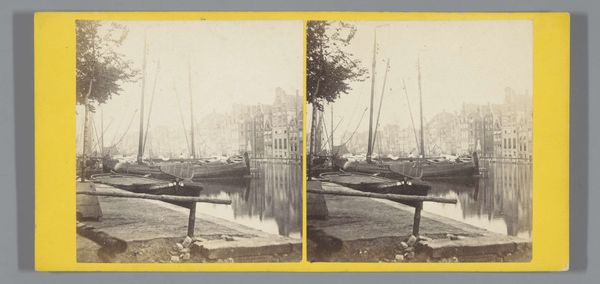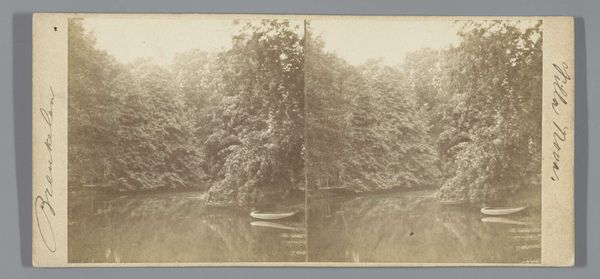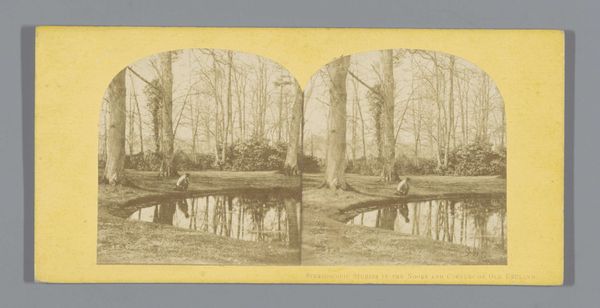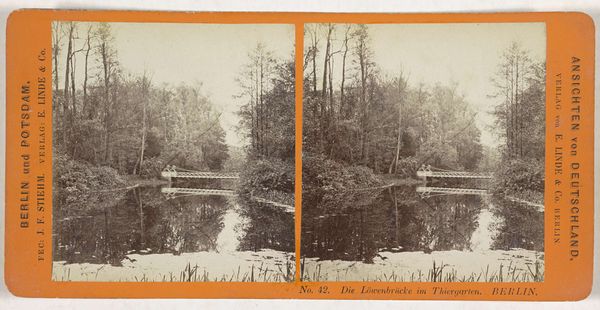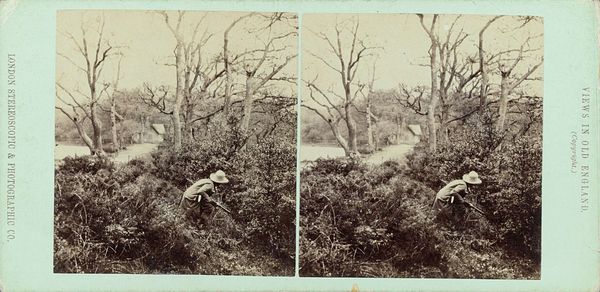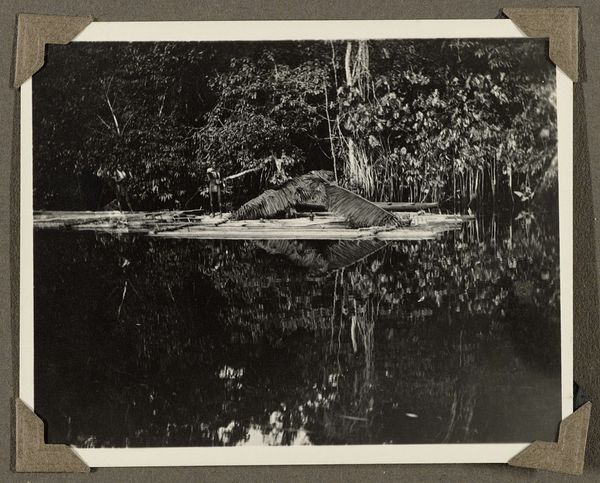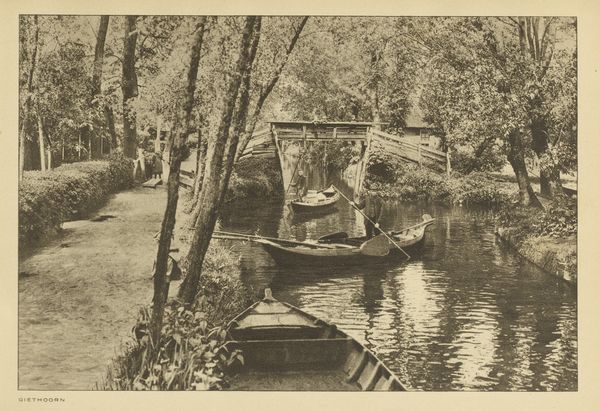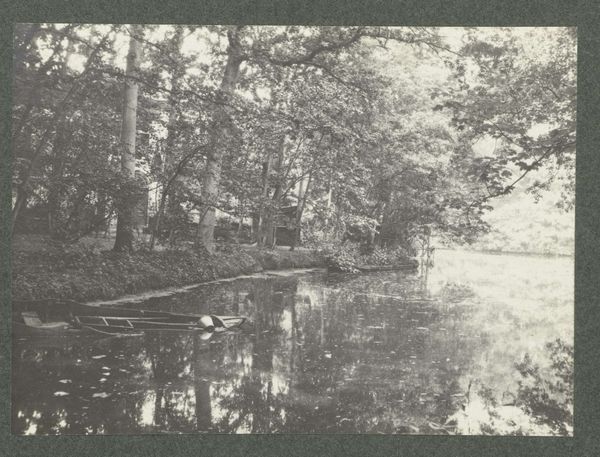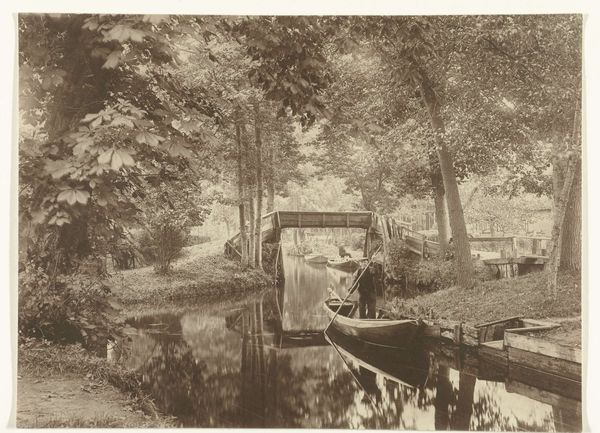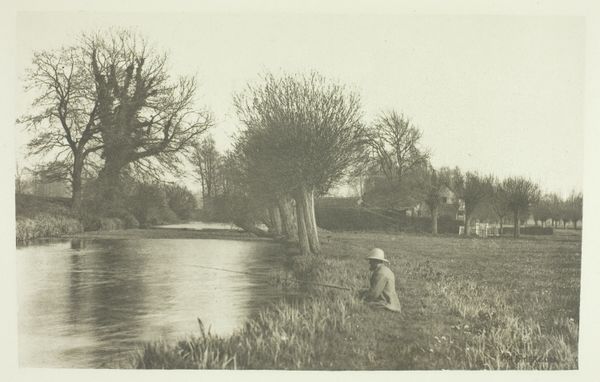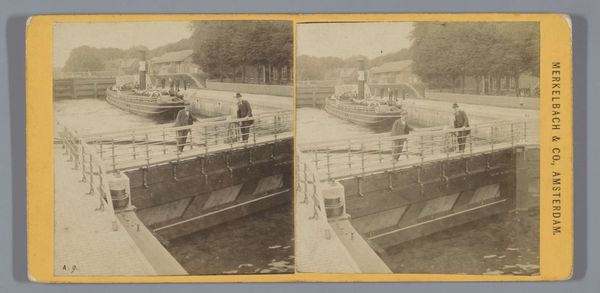
#
toned paper
#
pencil sketch
#
coloured pencil
#
watercolour bleed
#
watercolour illustration
#
mixed medium
#
sketchbook art
#
pencil art
#
mixed media
#
watercolor
Dimensions: height 83 mm, width 172 mm
Copyright: Rijks Museum: Open Domain
Editor: This work is titled "Man in a rowboat in England" by the London Stereoscopic Company, likely created between 1860 and 1880. It seems to be a mixed media piece. The sepia tones and the details in the reflections create a sort of melancholic, dreamy mood for me. How do you read the piece, considering its formal qualities? Curator: The composition immediately strikes me. The arrangement adheres to a strong horizontal emphasis, reinforced by the water and boat, counterpointed by the vertical thrust of the trees. The interplay between light and shadow, carefully controlled within the sepia palette, models the three-dimensional form while simultaneously flattening pictorial space. Editor: Do you think the use of toned paper contributes to the photograph's sense of depth? Curator: Indeed, the choice of toned paper profoundly impacts our perception. It's more than just a background. It creates a pervasive atmosphere that almost serves as another element that links together these compositional segments that at first might seem a little disjointed. Editor: So, the monochromatic palette isn't a limitation but an asset to visual harmony here? Curator: Precisely. Furthermore, the visible texture of the mixed media — evident in the blurring and bleeding of the watercolor — adds an undeniable haptic quality, encouraging an almost tactile engagement with what is fundamentally a visual representation. Are you noticing any other visual devices at play here? Editor: I hadn't considered that, but now I do. The soft focus around the edges does also bring attention to the detail, making it seem sharp by comparison. This helps focus the eyes on the boat and man. This approach feels very carefully crafted. Curator: Precisely. This careful calibration reveals how photographic techniques, like the deployment of tonality, are consciously manipulated to mold not merely an image but a total viewing experience. This highlights that meaning comes not from mimetic mirroring of external realities, but the structured relationship between elements. Editor: I am walking away with a lot to ponder here today. This examination has revealed a wealth of visual information! Curator: I agree. Close analysis illuminates just how much expressive power resides in seemingly straightforward representations when we examine the relations within the system, not just at face value.
Comments
No comments
Be the first to comment and join the conversation on the ultimate creative platform.
